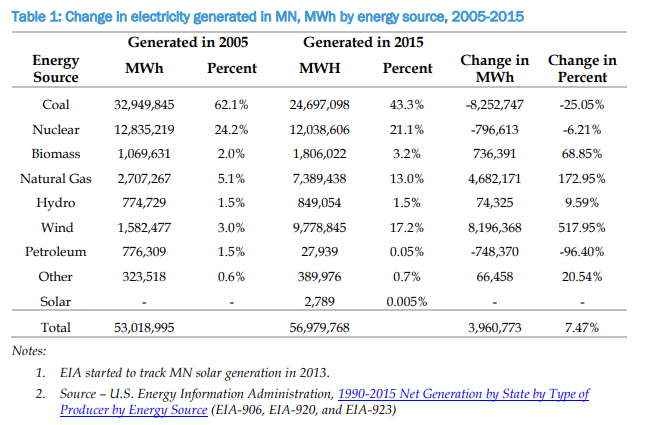How Installing Wind Energy Increases Electricity Prices
American Experiment has recently launched a billboard campaign highlighting the findings of our study “Energy Policy in Minnesota: The High Cost of Failure,” and we have received some feedback on the report and the corresponding billboard campaign:

After reading through some of this feedback, there are still some misconceptions that can be clarified about the impact of wind energy and electricity prices.
Many people believe that adding wind power to the grid reduces the cost of electricity because there are no fuel costs for wind turbines. It is true that wind has no fuel cost, however this is only a very small factor in the overall cost of electricity.
In reality, there are two main reasons that increasing the amount of wind power in the state is increasing prices: 1) Minnesota already has enough power plants to meet the electricity needs of its residents, and therefore it doesn’t need more, and 2) Wind power does not provide a steady, constant stream of electrons. Wind power starts and stops when the wind is blowing (or not), and these changes are often unpredictable. I’ll explain these concepts in greater detail.
- Minnesota already has enough power plants:
This may seem like a fuddy-duddy argument on its face, but this is actually a very important concept because adding more power plants to the system when electricity supply already meets demand, regardless of whether these plants are coal, natural, gas, nuclear, wind or solar, will result in higher prices.
This sort of over-investment in the electric grid has been a problem historically, because utility companies were building power plants they didn’t need because they are guaranteed a profit on every dollar they spend on infrastructure in something called rate-of-return regulation.
Therefore, the utility company’s innate incentive is to build more capacity all the time, regardless of need, which is exactly what has been happening in Minnesota.
According to the Energy Policy and Conservation Quadrennial Report 2016, published by the Minnesota Commerce Department, demand for electricity in Minnesota only grew by about 3.9 million megawatt hours of electricity from 2005 to 2015 (see the figure below).

This means that the demand for electricity in Minnesota only grew by about 7.35 percent, but the installed electricity generation capacity (which just means how much electricity could theoretically be produced by all of the power plants in the state) grew from 12,105 megawatts in 2005 to 15,743 megawatts in 2015, an increase of 30 percent!
Regardless of the generation source, this would be considered an enormous overbuild, and this large increase in generation capacity has resulted in increasing electricity costs in the state.
2) The Intermittency Problem:
Overbuilding is a key driver of increasing electricity costs, but the intermittency of wind is another factor that increases electricity prices.
For example, Minnesota has spent $10.4 billion building 3,500 MW of wind capacity since 1996, but because wind cannot produce electricity at consistent, predictable times, this does not mean that utility companies can shut down 3,500 MW of coal, natural gas or nuclear power. These traditional power plants must remain available to generate electricity in case the wind stops blowing.
Ultimately, this means that Minnesotans must “pay twice” for their electricity. Once for the wind turbines, and again for the reliable, so-called “backup” generation resources, which will fill in the gaps when the wind stops blowing. This increases costs because the cost of natural gas, coal, and uranium are only small portions of the overall costs these power plants incur (staff, maintenance, and financing costs) and these costs outweigh the amount of money saved from burning less fuel.
There is a lot more to this story, like the enormous cost of new transmission lines needed to connect more wind turbines to the grid, but that’s all for today.